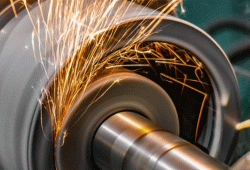How to Choose the Right Materials for Your Trade Show Displays
When designing a trade show display, one of the most important decisions you’ll make is choosing the right materials. The materials you select don’t just impact the look and feel of your booth—they affect durability, portability, setup ease, and even how well your display communicates your brand values.
With so many options available, it can be overwhelming to decide what will work best for your trade show goals and budget. This guide will walk you through the key factors to consider and help you make smart material choices for your next event.
Why Material Choice Matters
Your trade show booth materials serve multiple functions:
- Visual appeal: They set the tone and create an immediate impression.
- Durability: They need to withstand repeated transport, setup, and teardown.
- Weight and portability: Lighter materials are easier to handle but may sacrifice sturdiness.
- Cost-effectiveness: Balancing upfront costs with long-term investment.
- Brand alignment: Materials should support your brand story—whether that’s sustainability, luxury, innovation, or creativity.
Common Materials Used in Trade Show Displays
Here’s a breakdown of some popular materials, with their pros and cons:
1. Fabric
- Pros: Lightweight, portable, wrinkle-resistant, easy to print vibrant graphics on, and generally more affordable.
- Cons: Can be less durable over many uses and may require careful cleaning.
- Best for: Backdrops, banners, tension fabric displays, and table covers.
2. Aluminum
- Pros: Strong yet lightweight, resistant to corrosion, and offers a sleek, modern look.
- Cons: More expensive than plastic or fabric and can dent if mishandled.
- Best for: Frames, pop-up displays, and structural elements.
3. PVC and Plastic
- Pros: Versatile, easy to clean, and often cost-effective.
- Cons: Can look cheap if not well-designed and less environmentally friendly.
- Best for: Signage, graphic panels, and modular components.
4. Wood
- Pros: Offers a high-end, warm, and natural aesthetic. Very sturdy.
- Cons: Heavy and bulky to transport, may require more maintenance.
- Best for: Custom booths, flooring, shelving, and counters.
5. Foam Board and Cardboard
- Pros: Lightweight, inexpensive, easy to customize and replace.
- Cons: Not durable—prone to dents and damage.
- Best for: Temporary signage, prototypes, and internal displays.
Factors to Consider When Selecting Materials
1. Frequency of Use
If you attend many trade shows annually, investing in durable, reusable materials like aluminum frames and quality fabric graphics will save money and hassle over time. For one-off events, budget-friendly options like PVC or foam board may suffice.
2. Transportation and Setup
Consider how your materials will travel. Will you be shipping long distances? Handling setup alone or with a team? Lighter materials reduce shipping costs and make setup easier but shouldn’t sacrifice the quality or visual appeal you need.
3. Brand Values and Messaging
Your materials should support your brand story. For example:
- A company emphasizing sustainability might choose recycled fabrics, bamboo accents, or reusable modular components.
- A luxury brand might prioritize wood or polished metal finishes.
- A tech firm may want sleek aluminum and high-tech LED-integrated panels.
4. Visual Impact
Some materials provide better print quality or finish than others. Fabric is excellent for vibrant colors and large backdrops, while rigid materials like PVC or aluminum give a more polished, professional appearance.
5. Budget
Balancing cost and quality is essential. Consider the long-term investment versus immediate savings. Sometimes paying more upfront for durable materials reduces replacement costs and enhances brand perception.
Tips for Making the Best Choice
- Request samples: Always ask for material swatches or sample panels to see and feel before ordering.
- Test durability: If possible, test materials in real-world conditions to ensure they hold up to wear and tear.
- Think modular: Materials that can be repurposed or rearranged for different booth sizes increase your investment’s value.
- Work with professionals: Experienced trade show designers or display providers can recommend materials tailored to your needs.
Conclusion
Choosing the right materials for your trade show display is a crucial step that impacts everything from the booth’s appearance and functionality to your bottom line. By carefully considering your event frequency, transportation logistics, brand identity, and budget, you can select materials that make your display both beautiful and practical.
Invest in quality materials that reflect your brand and withstand the demands of trade show environments—and you’ll create a booth that impresses visitors and stands the test of time. We recommend Trade Show Displays.


